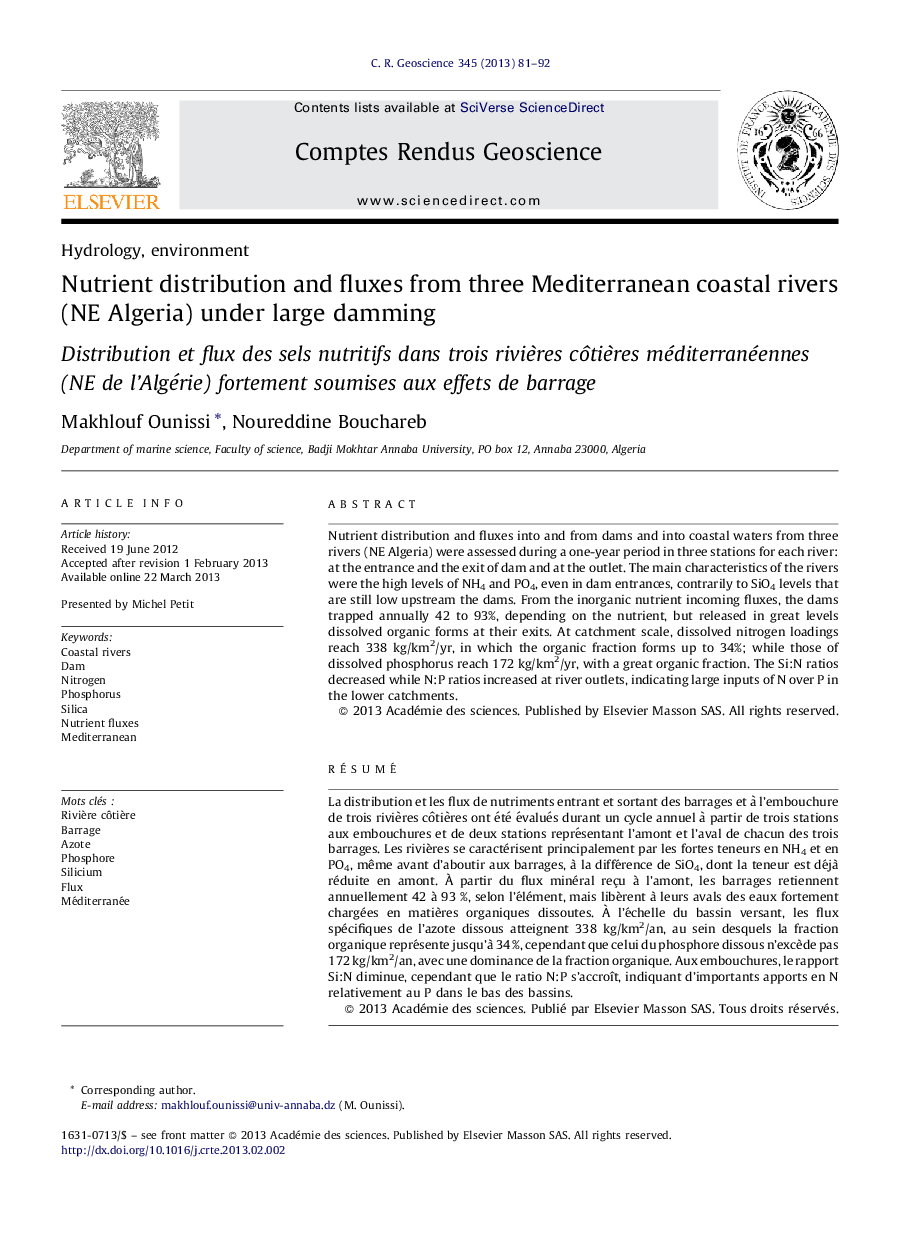| کد مقاله | کد نشریه | سال انتشار | مقاله انگلیسی | نسخه تمام متن |
|---|---|---|---|---|
| 4462462 | 1313501 | 2013 | 12 صفحه PDF | دانلود رایگان |

Nutrient distribution and fluxes into and from dams and into coastal waters from three rivers (NE Algeria) were assessed during a one-year period in three stations for each river: at the entrance and the exit of dam and at the outlet. The main characteristics of the rivers were the high levels of NH4 and PO4, even in dam entrances, contrarily to SiO4 levels that are still low upstream the dams. From the inorganic nutrient incoming fluxes, the dams trapped annually 42 to 93%, depending on the nutrient, but released in great levels dissolved organic forms at their exits. At catchment scale, dissolved nitrogen loadings reach 338 kg/km2/yr, in which the organic fraction forms up to 34%; while those of dissolved phosphorus reach 172 kg/km2/yr, with a great organic fraction. The Si:N ratios decreased while N:P ratios increased at river outlets, indicating large inputs of N over P in the lower catchments.
RésuméLa distribution et les flux de nutriments entrant et sortant des barrages et à l’embouchure de trois rivières côtières ont été évalués durant un cycle annuel à partir de trois stations aux embouchures et de deux stations représentant l’amont et l’aval de chacun des trois barrages. Les rivières se caractérisent principalement par les fortes teneurs en NH4 et en PO4, même avant d’aboutir aux barrages, à la différence de SiO4, dont la teneur est déjà réduite en amont. À partir du flux minéral reçu à l’amont, les barrages retiennent annuellement 42 à 93 %, selon l’élément, mais libèrent à leurs avals des eaux fortement chargées en matières organiques dissoutes. À l’échelle du bassin versant, les flux spécifiques de l’azote dissous atteignent 338 kg/km2/an, au sein desquels la fraction organique représente jusqu’à 34 %, cependant que celui du phosphore dissous n’excède pas 172 kg/km2/an, avec une dominance de la fraction organique. Aux embouchures, le rapport Si:N diminue, cependant que le ratio N:P s’accroît, indiquant d’importants apports en N relativement au P dans le bas des bassins.
Journal: Comptes Rendus Geoscience - Volume 345, Issue 2, February 2013, Pages 81–92